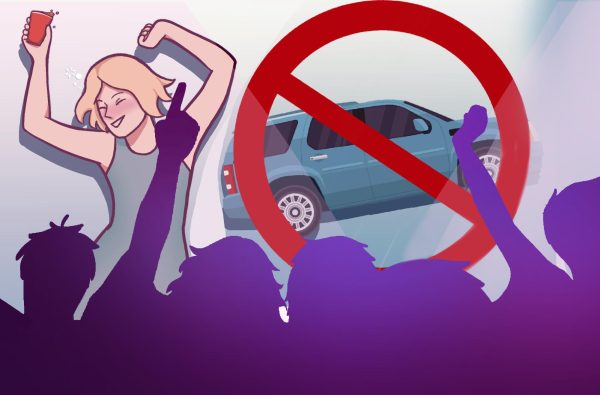Changing attitudes of Americans: media and music
October 30, 2013
American lifestyles are an ugly illustration of corrupt pop culture.
Popular culture is the inescapable influence many teens across the world face. Teenagers are affected by music, media, celebrities, and even fashion. Pop culture is surrounding everyone and many have grown addicted and even reverent.
Media has particular hold on youth.
Recall, if you would, the party movie of 2012, “Project X.” This movie documented three high school students that threw the over-the-top party of the year where no rules applied. After spiraling out of control, it caused controversy and extensive damage within the neighborhood.
According to ABC News, a spring break rave which attracted between 500 and 1,000 guests in a Houston mansion was meant to emulate the movie. The party became deadly when an unidentified male fatally suffered multiple gunshot wounds. Thirteen teenagers were arrested, nearly every window in the 4,000-square-foot home was broken, trash cans were full of spiked punch and wet foam blanketed the floor. It is also stated that this was not the first copycat party in Houston.
Unfortunately, this is a mere example of the effects media have on youth; body image is another focus. Eight million or more people in the United States have an eating disorder, 90 percent of which are women, according to Teen Health and the Media. Eating disorders are a result of the pressure in society to have the perfect body image that is obtained by favored and trendy celebrities.
Music physically, economically and psychologically guides rough drug and alcohol habits.
A recent trend in music has been the exaggerated use of Molly, or MDMA. Molly has had more attention due to popular songs by artists including Kanye West, Miley Cyrus and Trinidad James. Youth see celebrities in music videos and analyze the lyrics as if it’s cool; whatever they do is seen as the right thing. However, nobody takes into consideration the consequences of these glamourized trends that the media and celebrities advertise.
According to CNN, Molly users tend to be young, ages 16 to 24, and the drug appears to be gaining popularity. At least $525,000 worth of the drug was recovered in a college town of New York in 2011 after a large-scale drug trafficking operation- 20 people were charged. Music has evolved and constantly finds ways to negatively shape Americans’ lives.
We fall short of understanding that celebrities and media get paid for what they do. It just so happens that we are the fools that encourage and engage in it. Social media provides a stage for users to emulate the behavior they see in media, which their friends and followers as their own personal audience.
Although there are positive outcomes of social media, an overwhelmingly majority of the results are negative.
A common goal of social media users is to gain a large amount of “followers.” This grants the user a public reputation. Nothing is private. Twitter tracks all of your thoughts, actions and locations. Slowly but surely, Instagram is becoming the same concept, only with photos. The problem is over-looked because everyone is engrossed in keeping up with the latest trends.
Feelings and emotions have been transformed into emoticons. There is an obsessive attachment to social media.
Popular culture should be considered as a contributing factor to the attitudes, behaviors and morals of youth and Americans. We fail to realize the consequences of social media on our lifestyles. We should be more aware of how we perceive the world based on media and the ever-evolving technological trends.
American lifestyles are an ugly illustration of corrupt pop culture.
Popular culture is the inescapable influence many teens across the world face. Teenagers are affected by music, media, celebrities, and even fashion. Pop culture is surrounding everyone and many have grown addicted and even reverent.
Media has particular hold on youth.
Recall, if you would, the party movie of 2012, “Project X.” This movie documented three high school students that threw the over-the-top party of the year where no rules applied. After spiraling out of control, it caused controversy and extensive damage within the neighborhood.
According to ABC News, a spring break rave which attracted between 500 and 1,000 guests in a Houston mansion was meant to emulate the movie. The party became deadly when an unidentified male fatally suffered multiple gunshot wounds. Thirteen teenagers were arrested, nearly every window in the 4,000-square-foot home was broken, trash cans were full of spiked punch and wet foam blanketed the floor. It is also stated that this was not the first copycat party in Houston.
Unfortunately, this is a mere example of the effects media have on youth; body image is another focus. Eight million or more people in the United States have an eating disorder, 90 percent of which are women, according to Teen Health and the Media. Eating disorders are a result of the pressure in society to have the perfect body image that is obtained by favored and trendy celebrities.
Music physically, economically and psychologically guides rough drug and alcohol habits.
A recent trend in music has been the exaggerated use of Molly, or MDMA. Molly has had more attention due to popular songs by artists including Kanye West, Miley Cyrus and Trinidad James. Youth see celebrities in music videos and analyze the lyrics as if it’s cool; whatever they do is seen as the right thing. However, nobody takes into consideration the consequences of these glamourized trends that the media and celebrities advertise.
According to CNN, Molly users tend to be young, ages 16 to 24, and the drug appears to be gaining popularity. At least $525,000 worth of the drug was recovered in a college town of New York in 2011 after a large-scale drug trafficking operation- 20 people were charged. Music has evolved and constantly finds ways to negatively shape Americans’ lives.
We fall short of understanding that celebrities and media get paid for what they do. It just so happens that we are the fools that encourage and engage in it. Social media provides a stage for users to emulate the behavior they see in media, which their friends and followers as their own personal audience.
Although there are positive outcomes of social media, an overwhelmingly majority of the results are negative.
A common goal of social media users is to gain a large amount of “followers.” This grants the user a public reputation. Nothing is private. Twitter tracks all of your thoughts, actions and locations. Slowly but surely, Instagram is becoming the same concept, only with photos. The problem is over-looked because everyone is engrossed in keeping up with the latest trends.
Feelings and emotions have been transformed into emoticons. There is an obsessive attachment to social media.
Popular culture should be considered as a contributing factor to the attitudes, behaviors and morals of youth and Americans. We fail to realize the consequences of social media on our lifestyles. We should be more aware of how we perceive the world based on media and the ever-evolving technological trends.





















